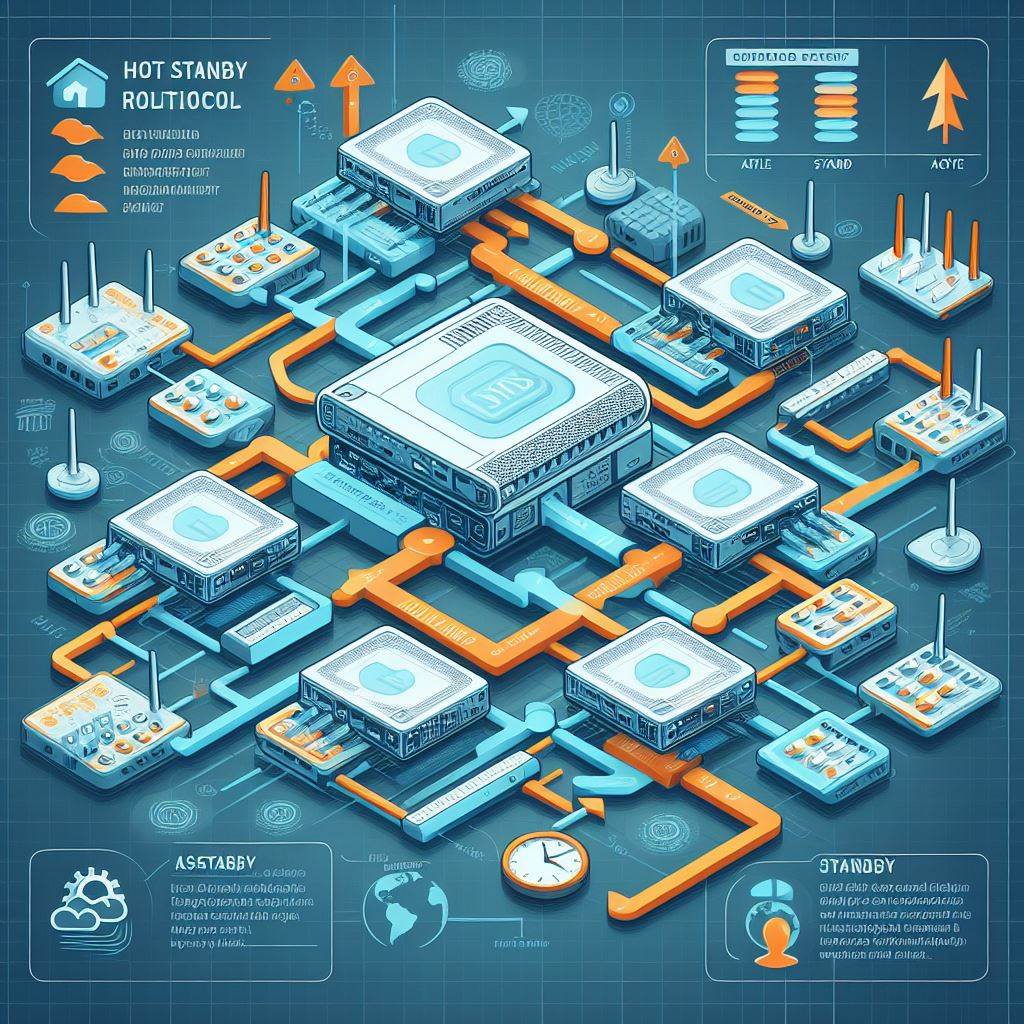Advanced STP tuning enhances network stability by optimizing Spanning Tree Protocol settings, reducing convergence time, and preventing topology changes from causing network disruptions.
Fine-tuning STP settings is crucial for minimizing downtime and ensuring optimal performance in complex network topologies with multiple switches.
1. Introduction to Advanced STP Tuning
Spanning Tree Protocol (STP) is essential for preventing loops in Ethernet networks, but default settings may not always provide optimal performance in large or complex networks. Advanced STP tuning involves adjusting various STP parameters to improve network stability, speed up convergence times, and minimize the impact of topology changes. By fine-tuning STP settings, network administrators can create more resilient and efficient networks.
2. Key Parameters for Advanced STP Tuning
Several key parameters can be adjusted to optimize STP performance:
- Bridge Priority
- Port Cost
- Port Priority
- BPDU Guard and BPDU Filter
- Root Guard
- UplinkFast and BackboneFast
2.1 Bridge Priority
Bridge Priority determines the likelihood of a switch being elected as the Root Bridge. The default bridge priority value is 32,768. Lowering this value on a specific switch can increase its chances of becoming the Root Bridge.
Command to Adjust Bridge Priority:
To change the bridge priority on a switch:
spanning-tree vlan [vlan-id] priority [value]
For example, to set the bridge priority to 4096 for VLAN 10:
spanning-tree vlan 10 priority 4096
Lowering the bridge priority helps ensure that the preferred switch becomes the Root Bridge, which can be critical in optimizing traffic flow.
2.2 Port Cost
Port Cost determines the cost of traversing a network segment. By adjusting port costs, network administrators can influence the path selection process, favoring certain paths over others to optimize network performance.
Command to Adjust Port Cost:
To change the port cost of a specific interface:
spanning-tree [vlan-id] cost [cost]
For example, to set the cost of a port on VLAN 10 to 19:
spanning-tree vlan 10 cost 19
Lowering or raising port costs can help control which paths are preferred and which are blocked, optimizing data flow and redundancy.
2.3 Port Priority
Port Priority is used to determine which port should be selected as the Root Port if multiple paths to the Root Bridge have the same cost. Lower port priority values are preferred.
Command to Adjust Port Priority:
To set the port priority on an interface:
spanning-tree [vlan-id] port-priority [value]
For example, to set the port priority to 64 for VLAN 20:
spanning-tree vlan 20 port-priority 64
Adjusting port priority can help ensure that the desired path is used for forwarding, thereby optimizing network performance and redundancy.
3. STP Security Enhancements
Advanced STP tuning also includes security enhancements to prevent malicious or accidental topology changes that could disrupt the network.
3.1 BPDU Guard and BPDU Filter
- BPDU Guard: Automatically disables a port if a BPDU (Bridge Protocol Data Unit) is received on a port where it is not expected. This is useful for edge ports connected to end devices, ensuring no rogue switches are introduced into the network.
Command to Enable BPDU Guard:
To enable BPDU Guard on an interface:
spanning-tree bpduguard enable
- BPDU Filter: Prevents BPDUs from being sent or received on specific ports. This can be used on ports that are not supposed to participate in STP.
Command to Enable BPDU Filter:
To enable BPDU Filter on an interface:
spanning-tree bpdufilter enable
3.2 Root Guard
Root Guard prevents a port from becoming a Root Port. This is particularly useful on ports where you do not want a downstream switch to become the Root Bridge.
Command to Enable Root Guard:
To enable Root Guard on an interface:
spanning-tree guard root
4. STP Convergence Optimizations
Optimizing STP convergence times is crucial in environments where rapid recovery from topology changes is necessary.
4.1 UplinkFast
UplinkFast speeds up convergence time in the event of a direct link failure. It is designed for access layer switches that have multiple uplinks to the distribution layer, allowing immediate transition of a blocking port to a forwarding state when the primary link fails.
Command to Enable UplinkFast:
To enable UplinkFast globally on a switch:
spanning-tree uplinkfast
4.2 BackboneFast
BackboneFast improves convergence time for indirect link failures by allowing switches to detect and react to lost BPDUs. It reduces the time taken to transition to a forwarding state when a link between switches fails.
Command to Enable BackboneFast:
To enable BackboneFast globally on a switch:
spanning-tree backbonefast
5. Advanced STP Features
5.1 Loop Guard
Loop Guard provides additional protection against loops by placing inconsistent ports in a loop-inconsistent state if BPDUs are not received on a non-designated port for a specific period. This prevents temporary loops due to unidirectional link failures or misconfigurations.
Command to Enable Loop Guard:
To enable Loop Guard on an interface:
spanning-tree guard loop
5.2 PortFast
PortFast is used on access ports to transition them immediately to the forwarding state, bypassing the usual STP states (Listening and Learning). This feature is typically enabled on ports connected to end devices to speed up connectivity.
Command to Enable PortFast:
To enable PortFast on an interface:
spanning-tree portfast
6. Conclusion
Advanced STP tuning is critical for enhancing network stability, security, and performance. By adjusting bridge priorities, port costs, and leveraging features like BPDU Guard, Root Guard, UplinkFast, and BackboneFast, network administrators can optimize network topology, reduce convergence times, and prevent unwanted network loops or disruptions. Proper configuration of these advanced features ensures a robust and resilient network infrastructure.
QUIZ: Advanced STP Tuning
1. What is the purpose of tuning the Bridge Priority in STP?
- a) To increase bandwidth
- b) To ensure a specific switch becomes the Root Bridge
- c) To block unwanted traffic
- d) To enable faster convergence
2. How does adjusting Port Cost affect STP?
- a) It changes the STP mode
- b) It influences path selection
- c) It increases network latency
- d) It disables BPDUs
3. What is the function of BPDU Guard?
- a) To encrypt BPDU frames
- b) To prevent loops by blocking BPDUs on edge ports
- c) To prioritize BPDU frames
- d) To allow BPDUs on all ports
4. Which command enables UplinkFast on a switch?
- a) spanning-tree portfast
- b) spanning-tree bpduguard enable
- c) spanning-tree uplinkfast
- d) spanning-tree backbonefast
5. What is the benefit of using Root Guard?
- a) It increases bandwidth
- b) It prevents an undesired switch from becoming the Root Bridge
- c) It accelerates network speed
- d) It allows for dynamic Root Bridge selection
6. Which feature improves convergence time for indirect link failures in STP?
- a) PortFast
- b) UplinkFast
- c) BackboneFast
- d) BPDU Filter
7. What does the PortFast feature do in STP?
- a) It blocks all traffic on an interface
- b) It immediately transitions an access port to the forwarding state
- c) It prioritizes STP BPDUs
- d) It increases port cost
8. How is the Loop Guard feature useful in STP?
- a) It allows faster frame forwarding
- b) It detects unidirectional link failures to prevent loops
- c) It disables unused ports
- d) It lowers port priority
9. Which command would you use to enable BPDU Filter on an interface?
- a) spanning-tree portfast
- b) spanning-tree bpdufilter enable
- c) spanning-tree guard root
- d) spanning-tree uplinkfast
10. What is the impact of changing the Port Priority in STP?
- a) It adjusts the STP version
- b) It determines which port is chosen as the Root Port
- c) It decreases bandwidth
- d) It blocks all network traffic









